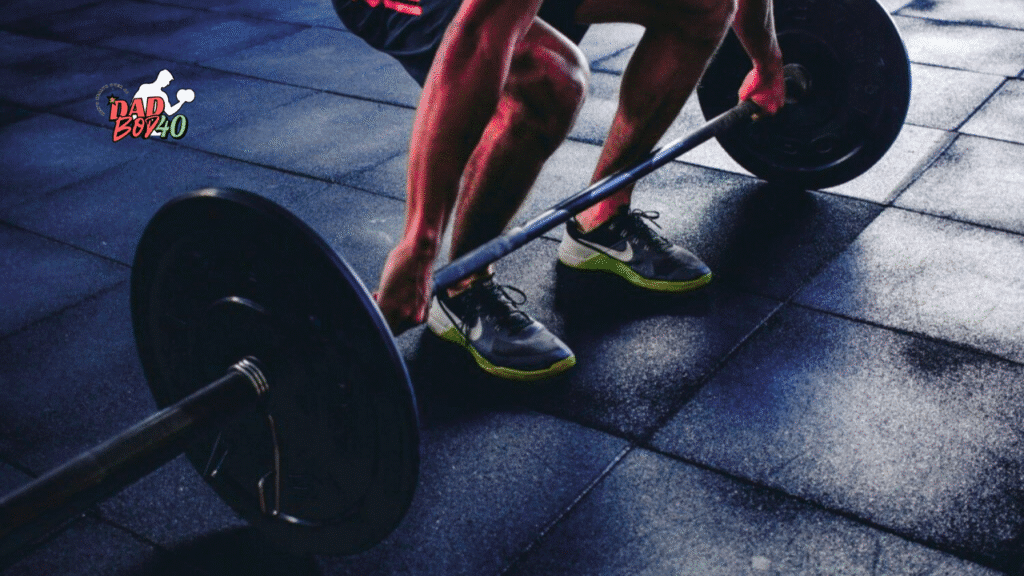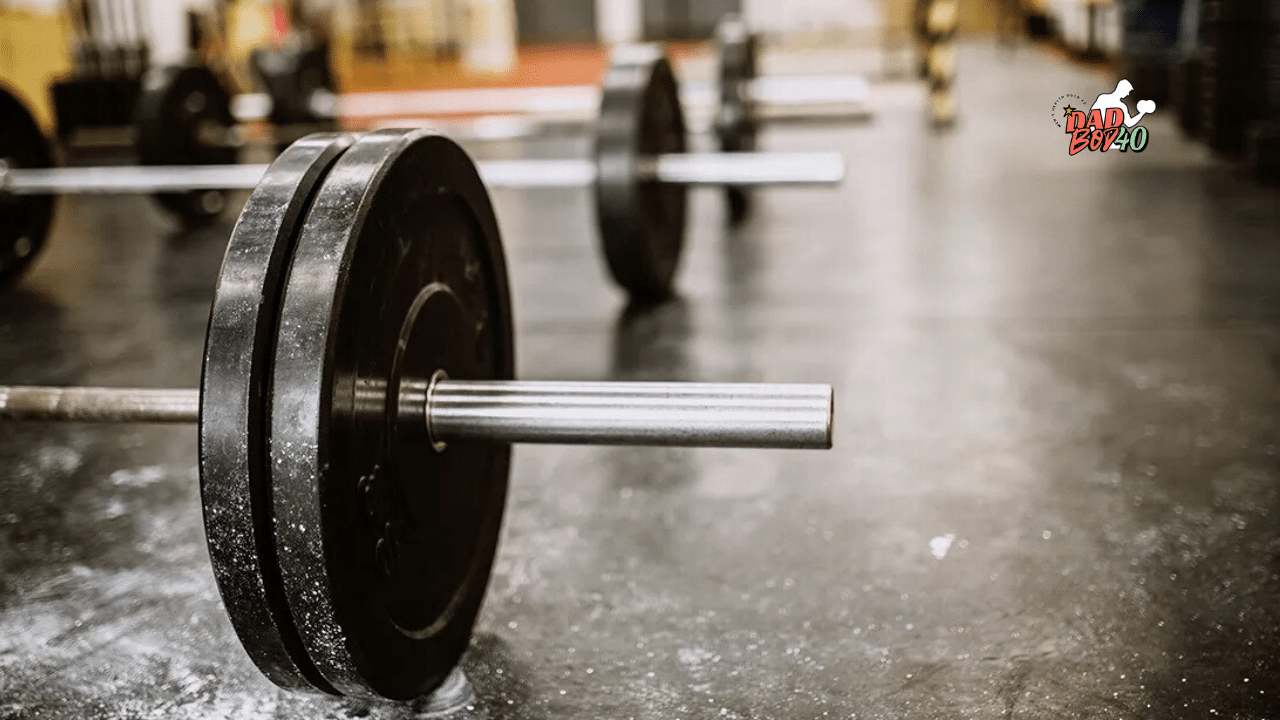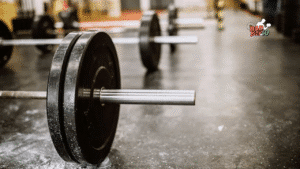Why Should Runners Add Strength Training?
Hey, Dad Bod 40 community! Joshua Van here, senior editor and resident “dad bod” of Dad Bod 40, the leading resource for honest information and actionable advice on nutrition, exercise, and supplementation for men over 40. If you’ve been hitting the road for years and are still running after 40 like me, you may have asked yourself the following question: “Why should runners do strength training?” I know I did.
As an avid runner, I figured as long as I could run, my body would automatically take care of the rest. However, I slowly started feeling some nagging aches and my runs were not as enjoyable as before. After some research, I decided to incorporate strength training into my routine and the results have been undeniable. I am now confident in saying that strength training is essential for runners over 40 who want to stay fit, fast, and injury-free. Here is a simple infographic about what I am going to cover in this article.
Key Takeaways
- Strength training can increase your running efficiency by 2-8%, allowing you to run longer without getting out of breath.
- Strength training can help prevent muscle loss that naturally occurs after the age of 40.
- Incorporating two to three strength training workouts per week can help improve posture, bone density, and metabolism to prevent future problems like stiff joints.
- For maximum results, focus on heavier lifts and single-leg exercises, and avoid overdoing it or only targeting your quadriceps.
- Strength training for men over 40 is all about maintaining mobility and functionality instead of building huge muscle mass. The goal is to be able to run better for longer years.
The Big Importance of Strength Training for Runners
Ok, let’s not kid around. Running after 40 isn’t the same as it was when you were 20 or even 30. I can still remember how at 29 I could run 10 miles and feel great the next day. Now 40 is a whole other story. My joints start aching and my recovery isn’t as fast as before. The solution I found is incorporating strength training into my routine. I have heard it from many readers of Dad Bod 40 who have added strength training to their workouts and felt a difference in their running form. A 2025 study in the Journal of Strength and Conditioning Research found that heavy strength training significantly improved running economy without increasing muscle mass.
Strength training for men over 40 is not about bulking up and becoming Mr. Olympia. It’s about staying active, avoiding pain and discomfort, and overall feeling better. The Mayo Clinic notes strength training is recommended for problems like back pain or low energy that become more common as we age. I started about two years ago and the difference it has made in my runs is incredible. I feel like my body is properly aligned and firing in all the right places.
Run Faster, Run Longer
Strength training for runners is about more than just maintaining your baseline. A lot of people feel like their runs are more difficult, even if they haven’t decreased their mileage. If this sounds like you, you need to start strength training. A 2025 International Sports Sciences Association report found that 6 to 20 weeks of strength training improved running efficiency by 6 to 8 percent. That means the same pace will require less energy and leave you feeling less winded. For men over 40, this is a game-changer. I can already feel that I have more in the tank for those long weekend runs.
It also will help you move faster. Research has shown that strength training can improve an athlete’s explosive power. In layman’s terms, that means your short sprints will get easier. Think about that last hill on your run before the finish line. I added deadlifts to my routine last year and those dreaded killer hills have become way less intimidating. It’s about running smarter, not harder.
Reduce Injury Risk
Injuries suck. Shin splints, achy knees, or that nagging Achilles tendon that won’t quit. They can all derail your running routine, and after 40 they seem to hit you harder. Enter strength training, your new best friend. A 2025 Runner’s World article revealed that strength training can reduce injury risk in older runners by strengthening the muscles surrounding your joints.
Focus on exercises that engage your glutes, hamstrings, and calves, since running is a quad-dominant sport. Many experts at Strength Running say this will help prevent muscle imbalances that can lead to injury. I learned this the hard way when I dealt with runner’s knee a few years ago. I added glute bridges and calf raises to my routine and it kept me on the trails rather than on the couch.
Gain an Advantage Over Aging
Another unfortunate fact is that after 40, we start to lose muscle mass at a rate of about 1% per year. It’s called sarcopenia and it makes those long runs and your recovery less enjoyable. However, research shows that strength training is the best combatant of sarcopenia. A 2024 study (which is still being reported in 2025) published by Prevention found that doing just 90 minutes of strength training a week can actually slow the aging process by as much as four years.
Not only does it help with muscle mass, but your bones will get stronger, helping to stave off osteoporosis. At Dad Bod 40, we are all about the big picture when it comes to men’s health and fitness. By adding strength training, you will stay leaner, keep your metabolism going strong, and still be able to kick your kids’ butts at a race when you’re in your 50s.
Getting Started With Strength Training
The thought of adding strength training to your routine can be overwhelming. But trust me, it’s not as hard as it sounds. The general recommendation is 2-3 workouts a week, each lasting 20-40 minutes. I don’t have a home gym, just a garage and a kettlebell when I started. If you don’t have the space or a budget for fancy equipment, don’t sweat it.
Start by warming up with dynamic stretches like leg swings. After that, jump into compound movements, such as squats or deadlifts. Recovery is also very important for men over 40, so don’t ignore your body’s needs. A good way to start is to add your strength training on your off days from running. This will prevent you from feeling too beat down.
Best Exercises for Runners
Pick exercises that will build strength without bulking up. Single-leg exercises are especially important since they better mimic your body’s position during running. Here is a list of vetted exercises from 2025 by Men’s Health and Runner’s World:.
- Squats: Builds quads and glutes. Aim for 3 sets of 8-12 reps.
- Deadlifts: Works your entire posterior chain. Romanian deadlifts are easier on your lower back.
- Lunges: Improves balance. Walking lunges are a great way to incorporate more cardio as well.
- Planks: Helps maintain good core strength for proper form. Try holding for 30-60 seconds.
- Calf Raises: Will help you out with Achilles tendon issues. Single-leg calf raises will increase the difficulty.
A July 2025 workout from the New York Times also recommends using resistance bands as another way to switch up your routine. I started adding them a couple months ago and have seen some results already.
Mistakes to Avoid
Guilty of making all of these. One of the most common errors is only using lighter weights and doing too many reps. However, a 2025 study showed that the biggest improvements for runners came with heavier weights (5-8 reps). Another mistake is skipping rest days. As many commenters in a Reddit fitness forum will tell you, our bodies need more recovery time after 40. Push too hard, and you will burn out.
FAQs
How often should runners over 40 lift weights?
Ideally, two to three times a week strikes a balance between seeing improvements and not overdoing it, according to the Mayo Clinic.
Will lifting make me slower?
Not at all! When done properly, weight training can make you faster. One study found that cyclists who performed weight training had faster times in time trials than those who only did cardio.
I don’t have access to a gym. What can I do?
If you can’t get to a gym, you can still do bodyweight exercises like squats or push-ups. You can even fill water jugs or backpacks with sand or rocks for added weight.
Can I lift if I have joint problems?
Yes, weightlifting can be safe for those with joint concerns if done properly. However, it’s a good idea to ease into it and check with your doctor before starting. Proper form is important to protect your joints.
How soon will I see results?
You may notice improvements in your running strength within 4-6 weeks, and you may even experience some injury prevention benefits earlier than that.
References
-
Runner’s World: “Stay Strong, Run Long: Tips for Your 40s” (2025)
-
ISSA: “Why Runners Need Strength Training” (2025)
-
Journal of Strength and Conditioning Research: “Heavy Lifting for Runners” (2025)
-
Prevention: “Weights Slow Aging: The Proof” (2024)
-
Men’s Health: “Best Strength Moves for Runners” (2025)
-
Mayo Clinic: “Strength Training for Life” (Ongoing)
-
Strength Running: “Runner’s Guide to Lifting” (2025)
-
The New York Times: “30-Minute Runner’s Workout” (2025)



















